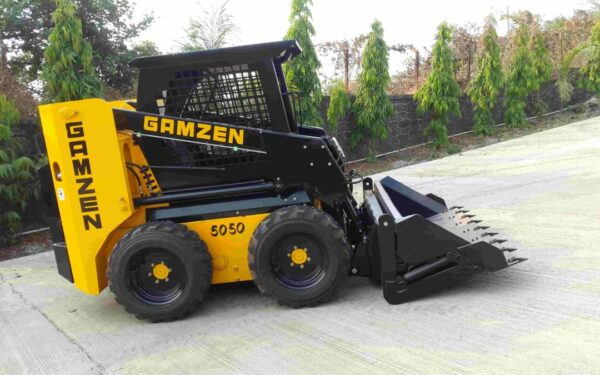All types of clay tile utilize some sort of grout for tiles to fill and seal the creases between the tiles. Regardless of whether the tile is customary earthenware, porcelain, or quarry tile, or regular stone, the creases between the tiles must be sufficiently loaded up with a material that keeps dampness from leaking down to the underlayment. To keep up with this water-evidence quality, all grout should be appropriately kept up with—fixed when breaks structure and intermittently fixed to keep the grout genuinely waterproof.
There are three principal kinds of grout: cementitious grouts made out of a Portland cement base; epoxy grouts, and furan grouts, with varieties accessible in each sort. Cementitious and epoxy grouts are accessible in various shadings that permit you to match or stand out from the shade of tiles; furan grouts are typically accessible just in dark.
Cementitious Grout For Tiles
Cementitious grouts have as their principal part Portland cement, in addition to filler particles of various sizes, a water-retentive added substance, and shaded colors. Cementitious grout for tiles are the conventional grouting material, utilized frequently in private applications just as in some business applications. Cementitious grouts arrive in a scope of shadings that let you match or differentiate with the tile. This grout is mixed with water and applied with a scoop. The water retentive specialist in cementitious grouts impedes the drying time, permitting the cement to gradually solution for the greatest hardness.
When utilized with permeable tiles like quarry, record, or other regular stone tiles, cementitious grout can stain the surfaces. Most experts seal permeable tiles before grouting—a stage that isn’t required with standard coated tiles.
Sanded versus Unsanded
Sanded cementitious grouts incorporate genuinely huge sand particles that can be seen and felt—they look and feel abrasive. Sanded grout for tiles is regularly suggested when the grout creases are 1/8 inch wide or more, as the sand gives additional holding power that forestalls breaking. Some consideration is required if utilizing sanded grouts on exceptionally cleaned tiles, as the sand can scratch the surfaces. Testing the grout on an example tile is a smart thought.
Unsanded grouts have a much smoother surface since the mineral particles they contain are extremely fine powders that have no observable coarseness. They are utilized with grout creases that are 1/16 to 1/8 inch wide. When utilized with more extensive creases, unsanded grouts tend to break since they come up short on the limiting force presented by sanded grouts.
Latex-Adjusted Grout
Sanded grouts might be detailed with a latex polymer added substance, either remembered for the dry mix or included as the grout is mixed with water. The added substance improves the water-verification nature of the grout and expands strength.
Upkeep
Cementitious grout for tiles are by a long shot the most well-known and can be utilized practically wherever that tile is introduced. However, even grouts containing latex-added substances are fairly permeable and subject to staining. All cementitious grouts should be fixed with an entering sealer consistently or two to keep them without stain and completely waterproof.
Epoxy Grouts
Epoxy grouts are a unique structure, utilizing no Portland cement. Nor is water utilized in the mixing system. These groups comprise epoxy tar, silica fillers, colors, and a hardener. Epoxy grouts are extensively less permeable than cementitious grouts and are a decent decision in places where acids and lubes are available, for example, in kitchens.
Epoxy grouts come in both unsanded and sanded structures, albeit the sort of sand utilized is unique about that found in cementitious grout for tiles. Epoxy grouts are set up genuinely quickly, making them somewhat interesting for novices. Epoxy grouts are likewise significantly more costly, costing about $8 per pound versus $1 to $2 for cementitious grouts. Yet, for regions where the most extreme stain obstruction is required, epoxy grout might be a great decision.
Know that epoxy grout can gravely stain tile surfaces that are permeable and unglazed, for example, limestone or quarry tiles. If utilizing epoxy grout on these tiles, the tiles ought to be fixed before grouting.
Upkeep
One benefit of epoxy grouts is that they don’t should be fixed, as do cementitious grouts. However, they can become stained. Scouring with a mixture of dye and water, or vinegar and water, as a rule, works really hard in cleaning epoxy grouts.
Changed Epoxy
One more sort of half and half grout is likewise accessible, which is an epoxy grout upgraded with Portland cement. The attributes of this grout are like standard Portland cement grouts—they require normal fixing, and so forth However, the grouts are more diligently, more grounded, and are more stain-safe than standard cementitious grouts.
Furan Pitch Grout For Tiles
Furan grout for tiles is like epoxy, yet it is made of polymers of sustained alcohols that are profoundly substance safe. The name gets from the furfuryl liquor remembered for the equation. There is no water at all utilized in this kind of grout. Furans are two-part frameworks that contain furan tar and filler powder with corrosive impetus. It is the corrosive impetus that makes the furan tars fix, framing a thermosetting tar that has fantastic compound, physical-, and warm obstruction.
Establishment Cost
The cost relies upon the degree of aptitude of the project work and the region on which the tile grout will be introduced. As a normal, any reasonable person would agree that the expense can go between $3 to $5 per square foot for grouting, cleanup, and fixing (where required).
Use Spray Plaster Walls for consuming time.








